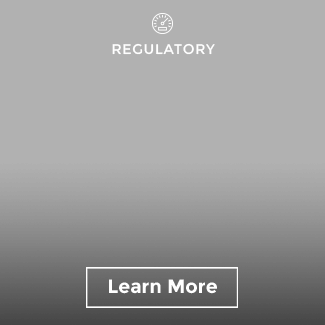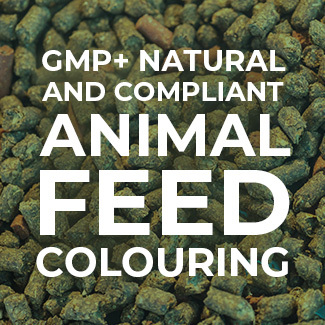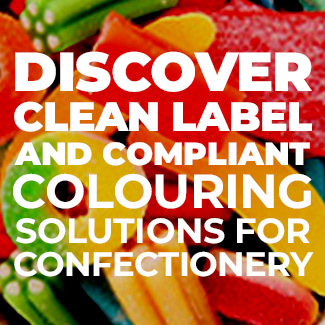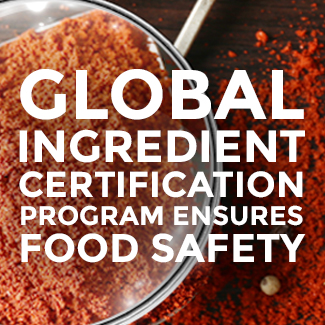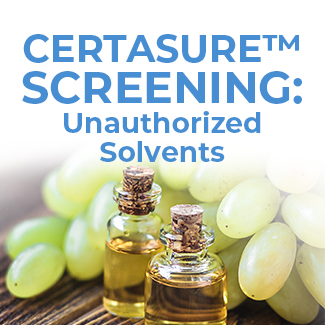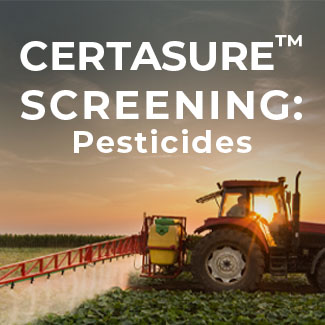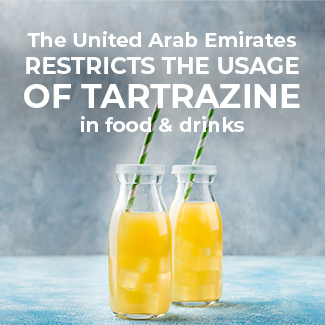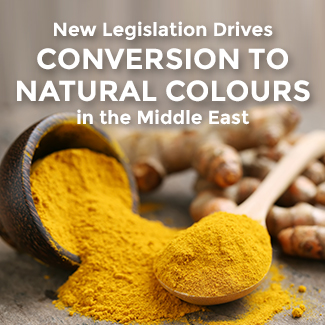Screening Natural Colours for Adulteration: Certasure™ Food Safety Program in Action
Our Certasure Adulteration Screening Process
Sensient’s adulteration screening process ensures all of our incoming natural raw materials are free from contaminants like synthetic dyes or other additives that adulterate the product.There is a zero-tolerance policy for adulterants.
Our oversight on adulteration of natural materials is extremely vigilant, as Sensient is on the RASFF’s notification list to be amongst the first to hear if an adulterant is flagged by a raw material vendor globally. In our first screening blog, we discussed our use of HorizonScan, which is an important tool for us to stay up to date on current risk matrixes and remain aware of potentially relevant global environmental events that could impact food safety.Two Ways Adulteration Occurs In Supply Chains
INTENTIONALLY
Adulteration may occur maliciously or for economic gain, whether to dilute a raw material so it can be “stretched” further or to increase its weight or volume to inflate pricing. Check out this video to see an example of how we helped a leading beverage brand identify a case of intentional adulteration.UNINTENTIONALLY
It would be much more likely for adulteration to occur by accident. Natural raw materials absorb things indiscriminately from the air, water, and soil around them. If the groundwater or soil in a field has been contaminated, that will get into the crop. This issue can be further exacerbated by the concentration process that many crops go through in order to extract the natural colour.
In teaching farmers about potential situations resulting in accidental adulteration, we highlight these scenarios:
If the same equipment is used to harvest beets first and then black carrots, without proper attention and cleaning, colour/chemicals from the first crop could contaminate the second.
The wind may carry pesticides through the air across multiple fields, contaminating a colour crop unintentionally.
If two grain-based crops are stored in close proximity, for example in an open warehouse, air currents might stir up lightweight particles from one and contaminate the other.
 incoming raw materials. We do see cross-contamination of pesticides and other environmental factors.
However, we remain alert and cautious. Even vendors with a spotless record are screened with rigor to ensure that we never miss an instance of adulteration or contamination.
incoming raw materials. We do see cross-contamination of pesticides and other environmental factors.
However, we remain alert and cautious. Even vendors with a spotless record are screened with rigor to ensure that we never miss an instance of adulteration or contamination.
Our Certasure™ Promise to You When you receive a natural colouring shipment from Sensient, you’ll see the Certasure™ shield on each product container — this is representative of our promise and guarantee of authenticity. You can rest assured that Sensient’s natural colouring will certainly not contribute to a recall or a consumer’s foodborne illness, thanks to the robust Certasure™ screening protocols in place. Sensient encourages our customers to always inquire about the implemented food safety protocols of all of their suppliers, of course including ourselves.
When you receive a natural colouring shipment from Sensient, you’ll see the Certasure™ shield on each product container — this is representative of our promise and guarantee of authenticity. You can rest assured that Sensient’s natural colouring will certainly not contribute to a recall or a consumer’s foodborne illness, thanks to the robust Certasure™ screening protocols in place. Sensient encourages our customers to always inquire about the implemented food safety protocols of all of their suppliers, of course including ourselves.










